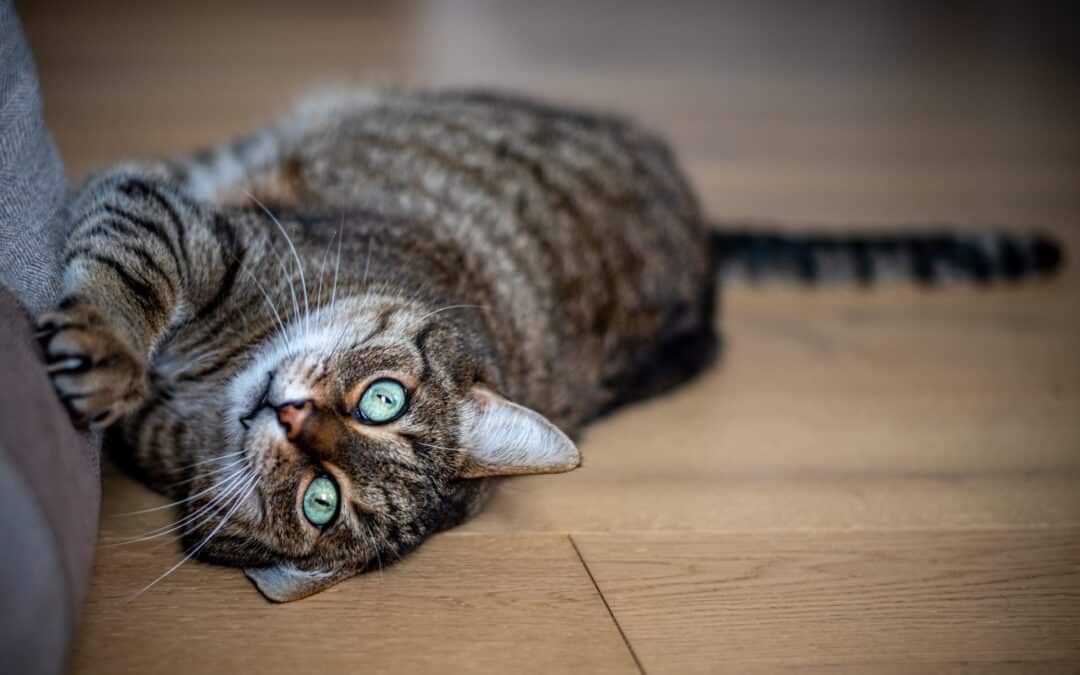It’s happened to pretty much everyone who lives with a cat—that moment when you hear the unmistakable sound of claws scratching at the arm of the couch or the wooden leg of your antique table.
Being upset that your furniture is getting destroyed is understandable. This quick guide explains why cats need to scratch and provides a few tips on how to stop destructive scratching behavior.
Why Cats Need to Scratch
Scratching comes as naturally to cats as chewing does to dogs. While humans might see scratching as destructive, for cats it fulfills some basic needs. There are several reasons why a cat needs to scratch—usually, it’s one of the three listed below.
1. To Leave Their Scent
Wild cats, like tigers, will scratch at trees to mark their territory, and domestic cats aren’t much different. Cats have scent glands on their paw pads, and when they scratch they leave traces of their personal scent behind.
2. To Groom Their Nails
When cats scratch, they’re filing down the outermost layer of their nails. This grooming process naturally keeps their claws sharp and prevents them from getting too long. An innate behavior in the wild, scratching keeps big cats from developing overgrown nails.
3. To Relieve Stress
For some cats, scratching simply feels good. For others, it’s a form of exercise. Along with stretching and jumping, scratching is a form of play that allows them to work out excess energy.
No matter the reason, it is important to understand that your cat is not trying to make you mad. The key to stopping destructive scratching is to find something that they like to scratch more than your furniture.
While it might seem like declawing your cat could solve your problems, we don’t recommend it. Declawing can cause all sorts of health issues, intense pain, and will put your cat’s life at risk if they ever escape outdoors.
Five Tips To Stop Destructive Scratching
1. Provide different places for approved scratching.
Make sure to choose a scratching post that’s longer than your cat, so they can work a full-body stretch in. Cats usually need more than one type of surface texture for satisfying scratching. Providing multiple places to scratch may also help if your cat is scratching to mark their territory.
Finding the right scratching post can be a long journey, especially if you’re trying to break an established couch-scratching habit. Once you find a scratching post you like, place it close to where most of the destructive scratching has been happening. Bribery in the form of catnip sprinkled (or treats placed) on the new scratching post can help draw your cat toward it.
2. Protect your most important furniture.
There are many ways to protect furniture that are not thick, ugly plastic covers. You can now find tear-resistant fabric covers, and even scratching pads that wrap around the arms or backs of couches and chairs. For furniture with wooden legs, contact paper wrapped around the wood can help prevent deep, irreparable scratches.
3. Provide more activities for your cat.
Bored cats tend to be the most destructive. Boredom leads to stress and stressed cats tend to scratch more. Giving your cat ample opportunities to play can help reduce stress and provide the mental stimulation they need.
Figure out what type of play your cat likes best, and they might start scratching less. Some cats like boxes to jump in and out of, an electronic fish that flaps around the floor for them to pounce and chase, or a good old feather attached to a string that you drag or bounce around.
4. Check your cat’s environment for stress factors.
Things like a loud fan, another pet, or a misplaced litter box could be a significant source of stress for your cat. Does your cat need a safe place to hide from the dog? Did you recently change your brand of cat litter? Resolving environmental stress factors to the best of your ability will help reduce destructive scratching.
If you have multiple cats, watch them for guarding behavior, especially around the litter box, food and water, and even preferred sleeping spots. Excessive territory marking could be the reason why your favorite chair has suffered. Litter boxes in multiple locations or separate feeding areas might resolve the problem.
5. Keep your cat’s nails trimmed.
Sometimes scratching is simply an instinctive way for your cat to avoid the pain of overgrown nails. Claws that are too long might push into the floor or get caught in the bedspread, causing pain in their sensitive paws. Keeping your cat’s nails neatly trimmed just might solve an excessive scratching problem.
Best Cat Care in Arizona
When irritating cat behaviors are on your mind, you can get stressed out, too. But exceptional veterinary care should never be stressful. The animal lovers at East Valley Animal Hospital want to make every visit stress-free.
With our extensive training, valuable experience, and so many pets between us, we have the know-how to help you with all your cat care needs. Contact us today to schedule an appointment.
Images used under creative commons license – commercial use (5/21/23). Photo by Daniel Zopf on Unsplash.

